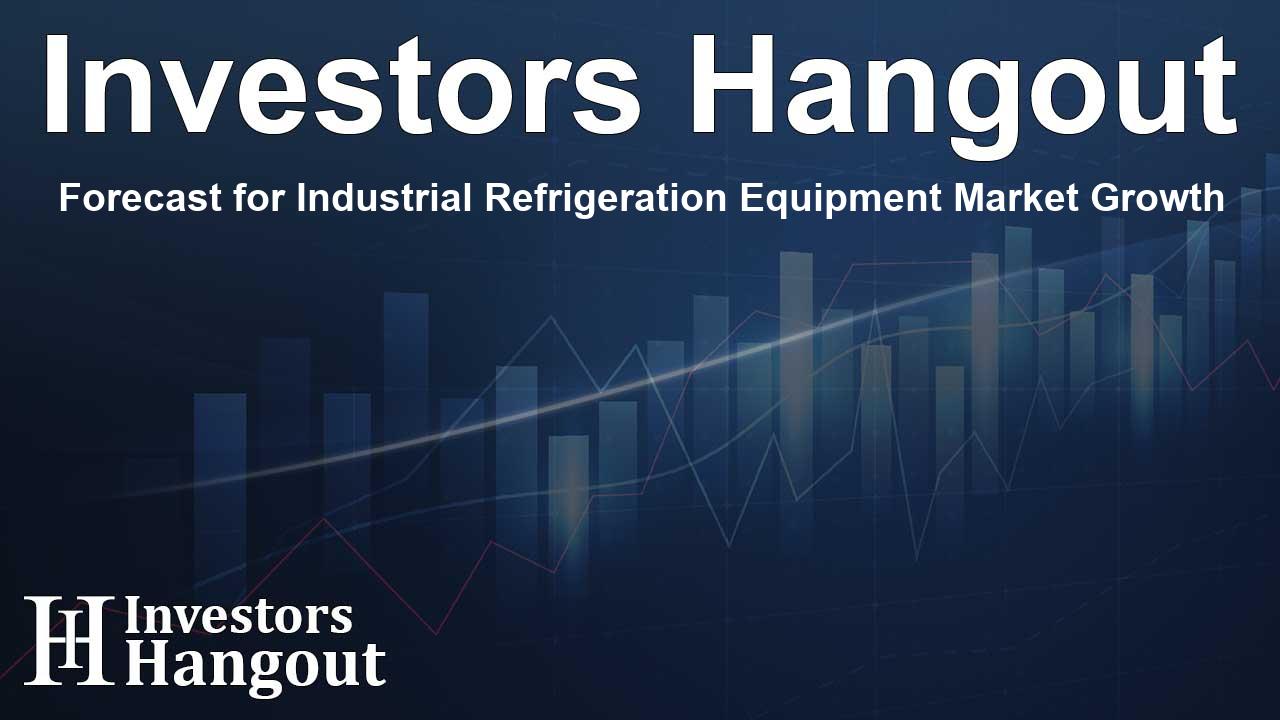Forecast for Industrial Refrigeration Equipment Market Growth

Understanding the Industrial Refrigeration Equipment Market
The Industrial Refrigeration Equipment Market is experiencing significant transformation. The global market is projected to grow substantially, with estimates suggesting an increase from approximately USD 42.23 billion in recent years to around USD 70.05 billion by 2033. This trend indicates a compound annual growth rate (CAGR) of approximately 5.21% during the period from 2024 to 2033.
Key Factors Driving Market Growth
Several key factors are propelling the growth of the Industrial Refrigeration Equipment Market. First, there is a rising demand for efficient cooling solutions. Industries are increasingly opting for advanced and hassle-free refrigeration systems that offer easy programmability, consistent performance, and energy efficiency.
Surge in Frozen Food Demand
The growing preference for frozen and processed foods, driven by changes in consumer lifestyles, significantly boosts the market for industrial refrigeration equipment. These systems play an essential role in maintaining the quality and safety of perishable products.
Technological Innovations
Innovation is at the heart of this market expansion. Ongoing technological advancements include enhanced energy efficiency, smart controls, and the integration of eco-friendly refrigerants. These improvements not only enhance system performance but also attract tech-forward consumers.
Impact of Cold Chain Logistics
The global expansion of cold chain logistics is another critical factor impacting demand. The need for reliable and efficient refrigeration systems is vital for companies operating in logistics and storage, especially those managing high volumes of perishable goods.
Pharmaceutical Growth and Compliance
The pharmaceutical and biotechnology sectors also influence market dynamics. The critical requirement for precise temperature control in these industries has led to increased demand for industrial refrigeration solutions. Such systems are necessary for the storage and transport of sensitive pharmaceutical products, including vaccines and biological samples.
Compliance and Safety Regulations
Moreover, the stringent health and safety regulations regarding food safety and pharmaceutical storage foster demand for industrial refrigeration equipment that meets compliance standards. As industries adapt to these regulations, the significance of efficient refrigeration systems becomes ever more apparent.
Market Trends and Innovations
Investments in urban development and rapid industrial growth are boosting the industrial refrigeration equipment market. Increasing disposable incomes in emerging markets also enable investment in advanced refrigeration technologies, expanding the market's reach globally.
Strategic Partnerships and New Launches
Collaboration is key in this industry; for instance, recent strategic partnerships like that of Hillphoenix Industrial with Cool Refrigeration Systems & Solutions have aimed to enhance their offerings in the CO2 refrigeration systems market. Similarly, the launch of innovative refrigeration lineups by companies like Daikin showcases the industry's commitment to modernization.
COVID-19 Pandemic Effects
The pandemic has influenced the industrial refrigeration equipment market in complex ways. While it disrupted international trade and affected manufacturing, it also highlighted the need for automation and innovative solutions in supply chains, driving the market's recovery and adaptation.
Regional Market Overview
Regionally, the North American and European markets are prominent, predominantly driven by the need for energy-efficient solutions. The Asia-Pacific region is witnessing rapid industrialization, creating a demand for high-quality refrigeration systems to support growing industries.
Emerging Markets
In emerging regions, the focus is on sustainability and energy efficiency, with manufacturers adapting to local demands. This shift is spurred by urbanization and an expanding middle-class population seeking advanced refrigeration technologies.
Frequently Asked Questions
What is the expected growth rate of the Industrial Refrigeration Equipment Market?
The market expects a CAGR of approximately 5.21% from 2024 to 2033.
What are the main drivers of growth in this market?
Key drivers include the demand for efficient cooling solutions, rising frozen food demand, and technological advancements.
Which sectors are significant consumers of industrial refrigeration equipment?
The food and beverage, healthcare, chemical, logistics, retail, and hospitality sectors are prominent consumers.
How has the COVID-19 pandemic affected the market?
The pandemic has caused operational disruptions but also accelerated innovations and adaptations within the industry.
What innovations are being introduced to the market?
New innovations include advanced smart controls, eco-friendly refrigerants, and automation features in refrigeration solutions.
About The Author
Contact Addison Perry privately here. Or send an email with ATTN: Addison Perry as the subject to contact@investorshangout.com.
About Investors Hangout
Investors Hangout is a leading online stock forum for financial discussion and learning, offering a wide range of free tools and resources. It draws in traders of all levels, who exchange market knowledge, investigate trading tactics, and keep an eye on industry developments in real time. Featuring financial articles, stock message boards, quotes, charts, company profiles, and live news updates. Through cooperative learning and a wealth of informational resources, it helps users from novices creating their first portfolios to experts honing their techniques. Join Investors Hangout today: https://investorshangout.com/
The content of this article is based on factual, publicly available information and does not represent legal, financial, or investment advice. Investors Hangout does not offer financial advice, and the author is not a licensed financial advisor. Consult a qualified advisor before making any financial or investment decisions based on this article. This article should not be considered advice to purchase, sell, or hold any securities or other investments. If any of the material provided here is inaccurate, please contact us for corrections.
